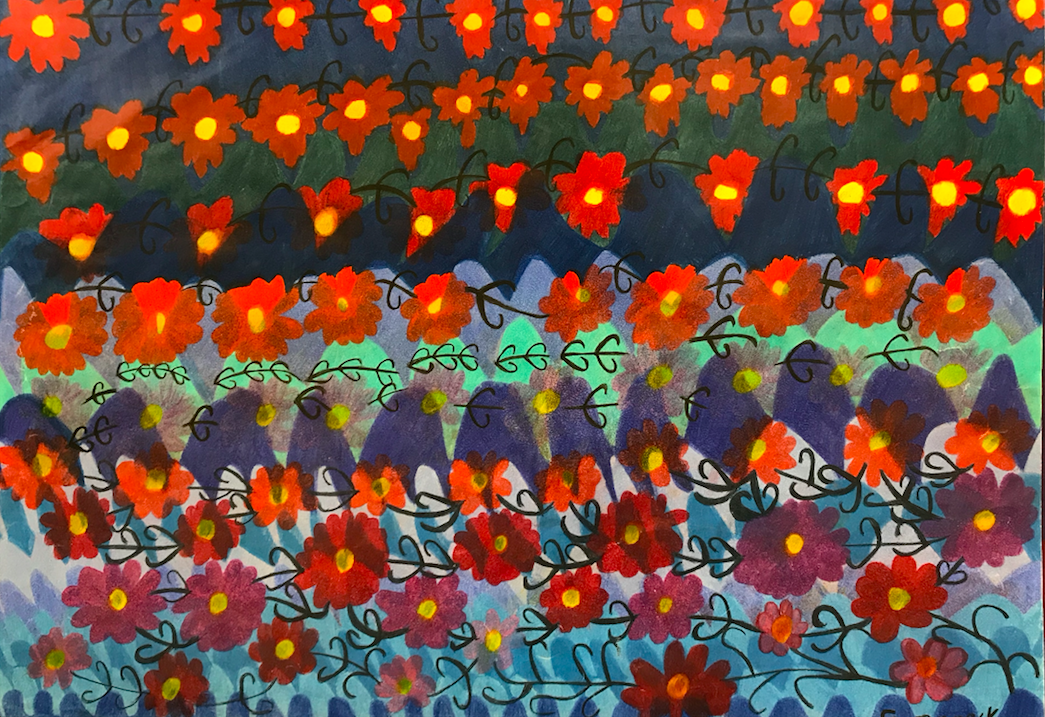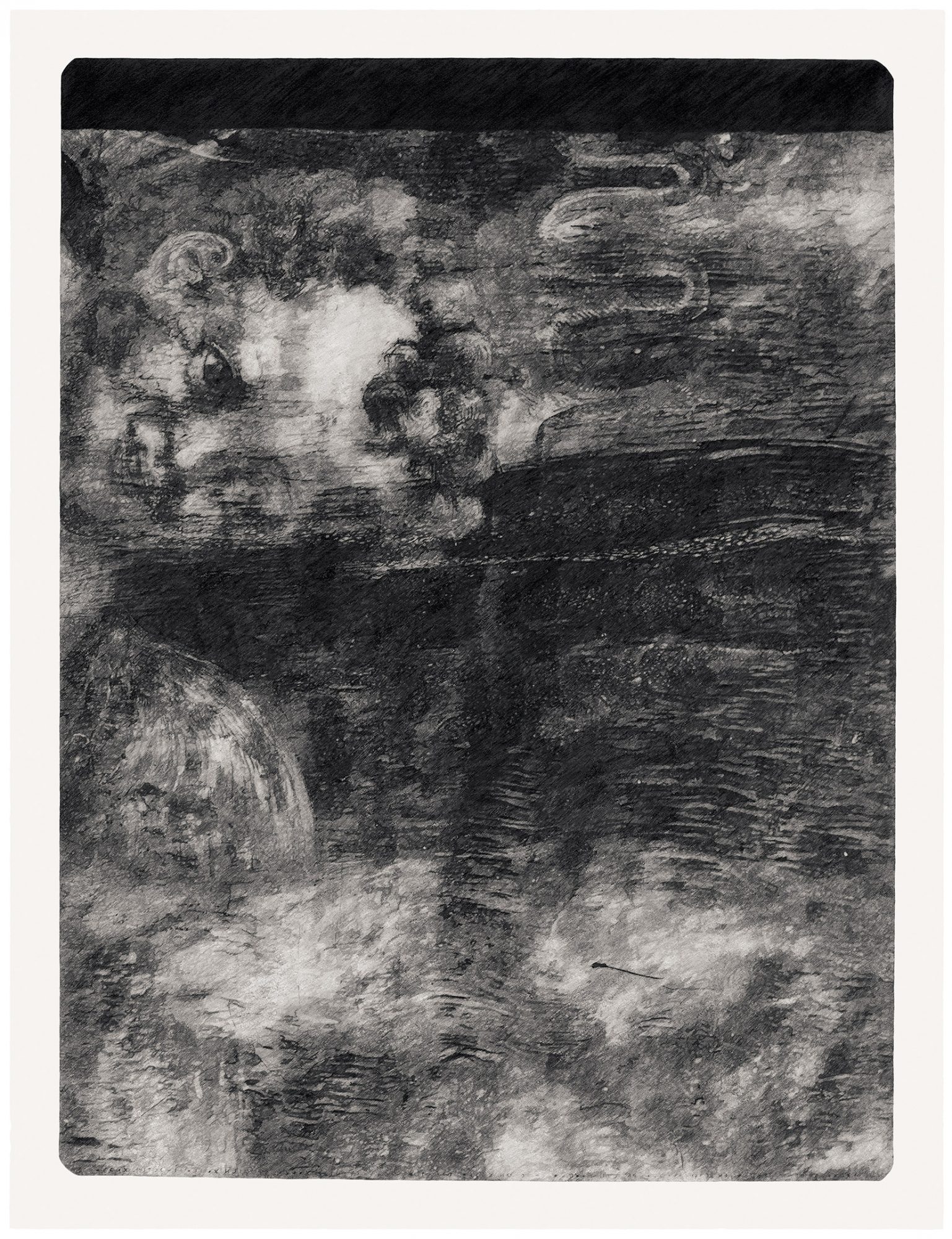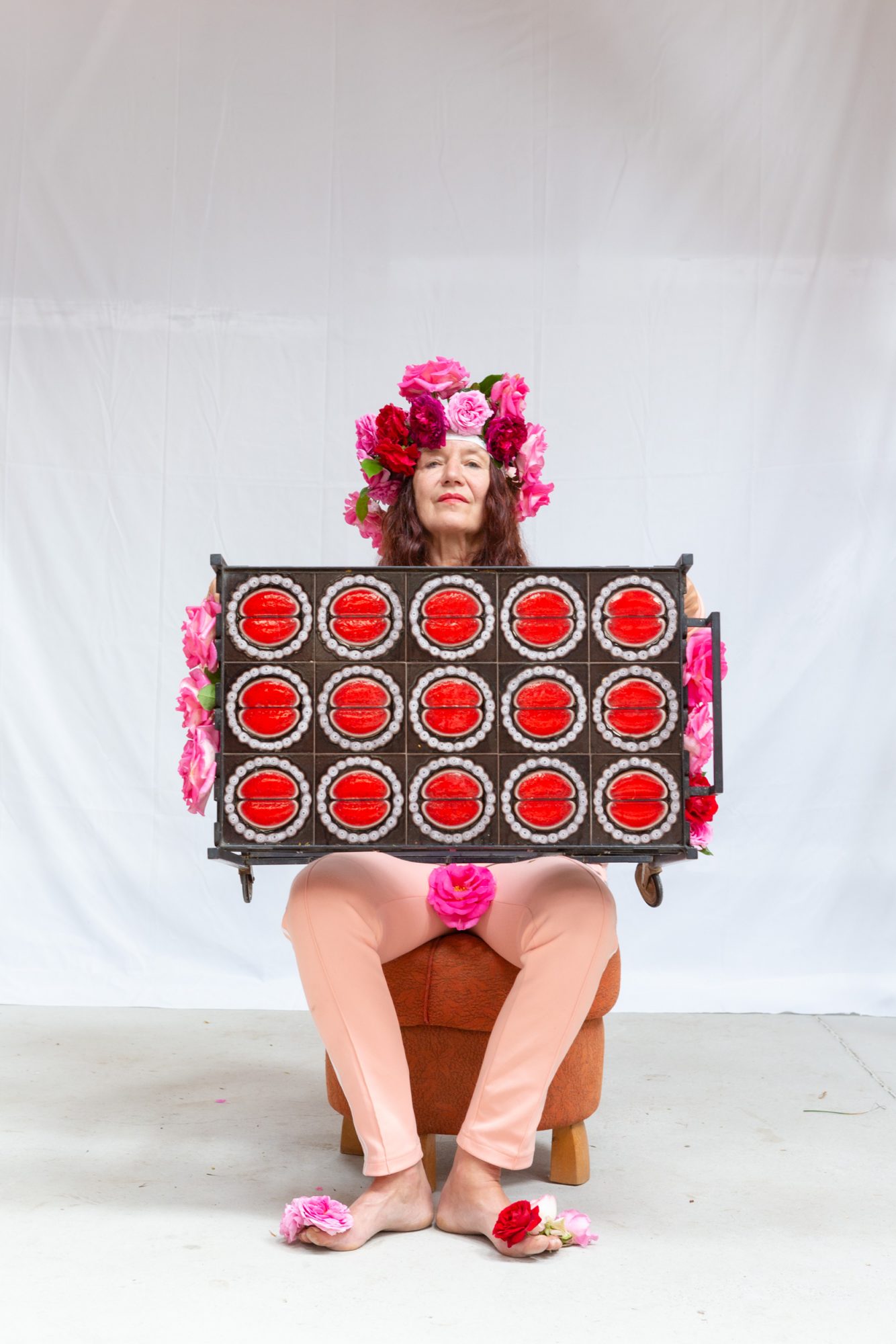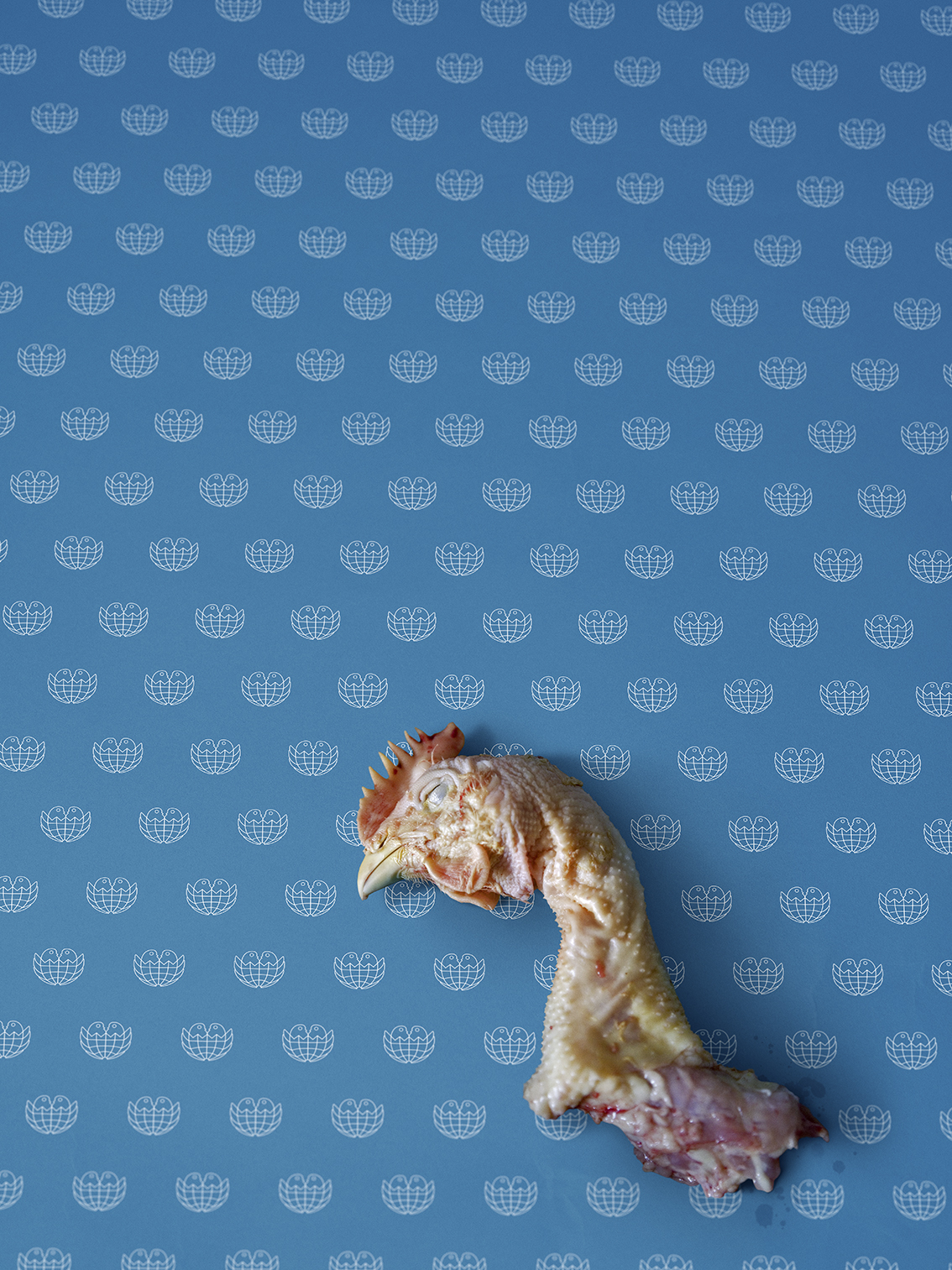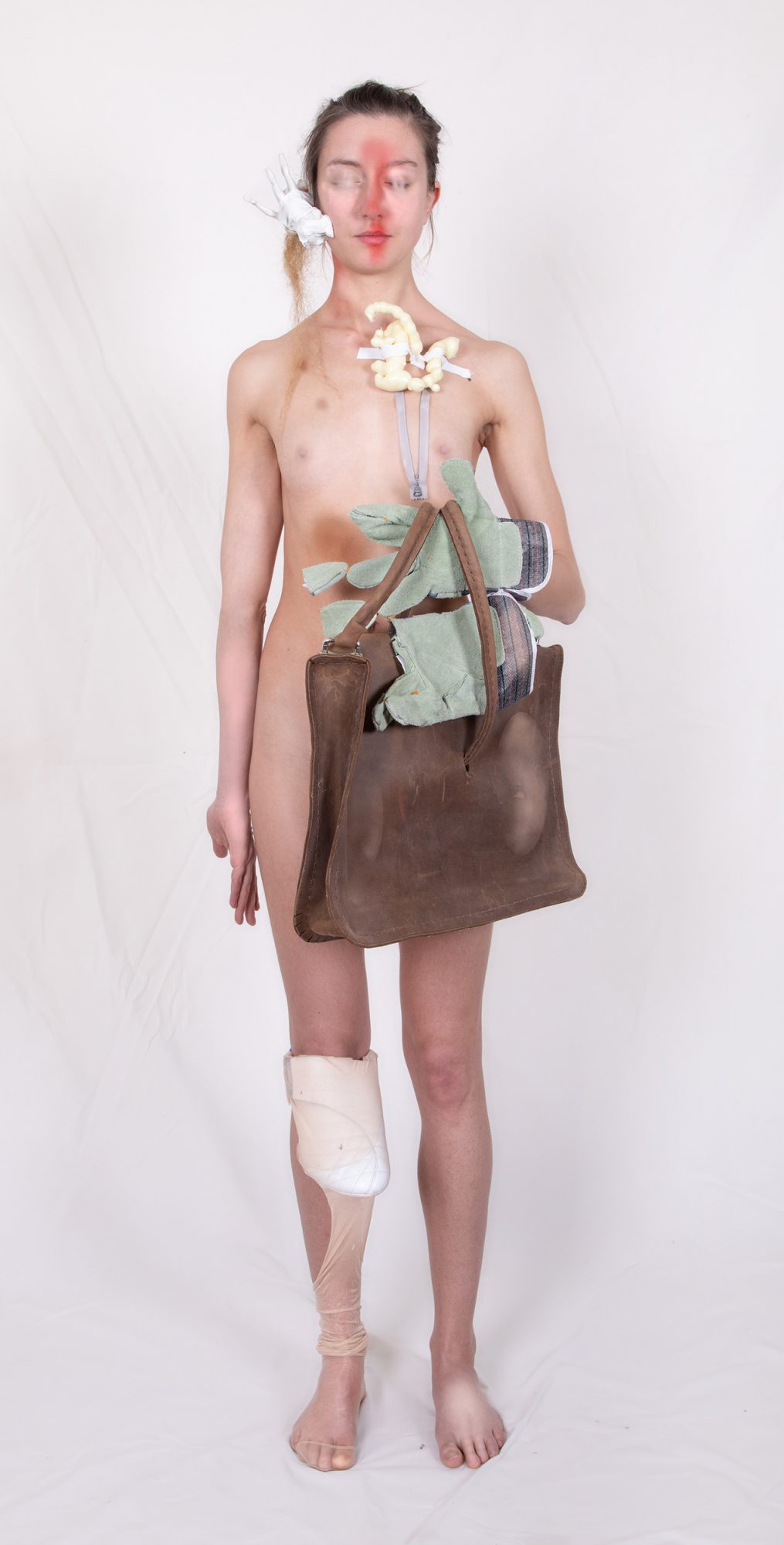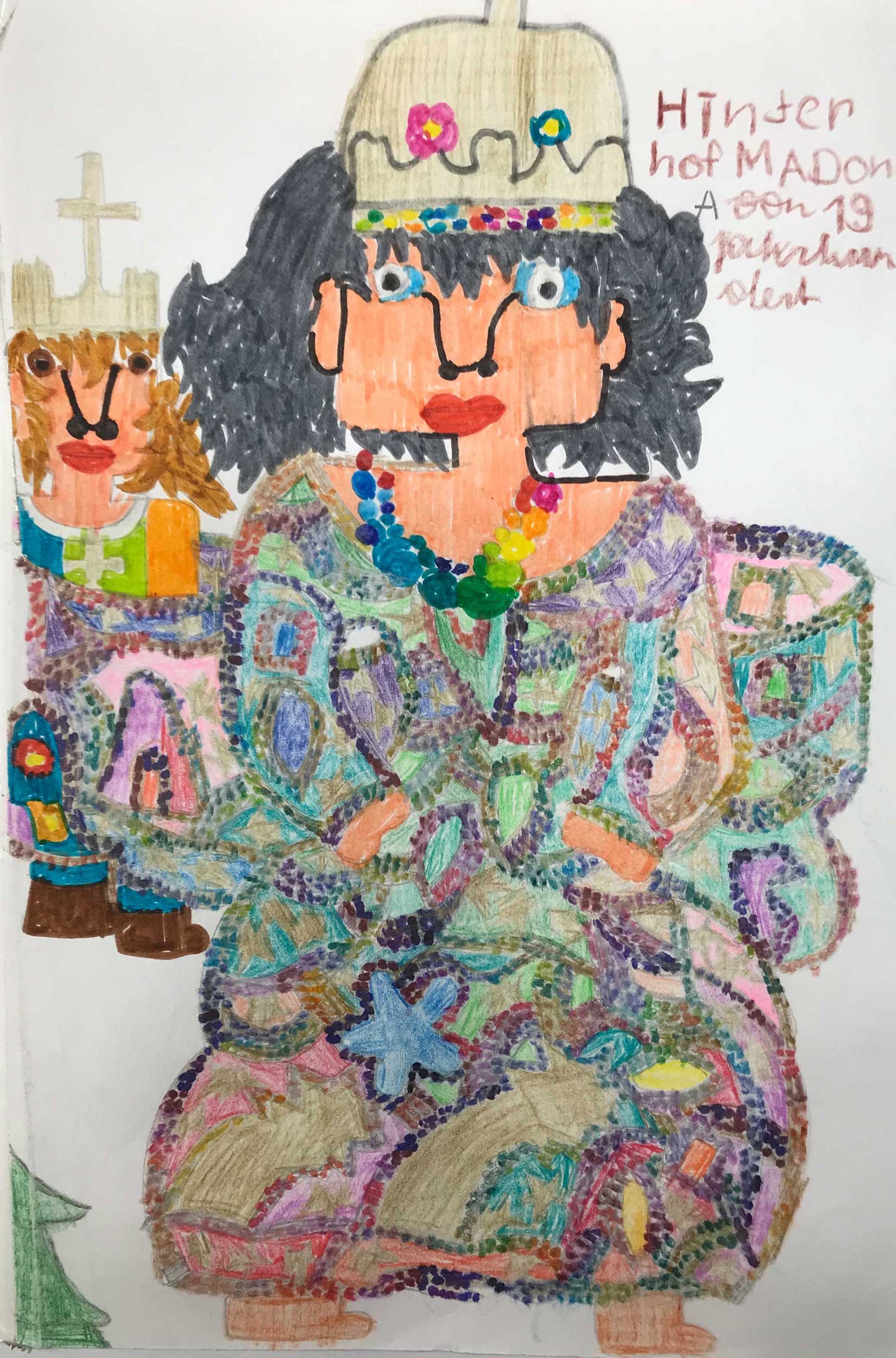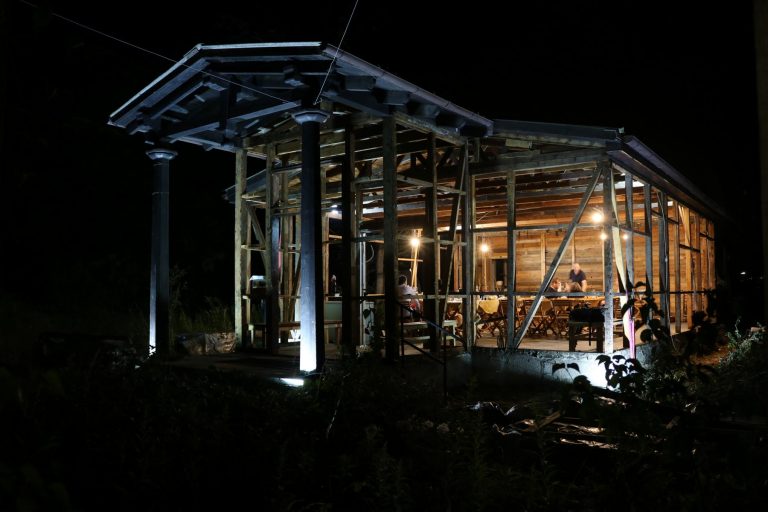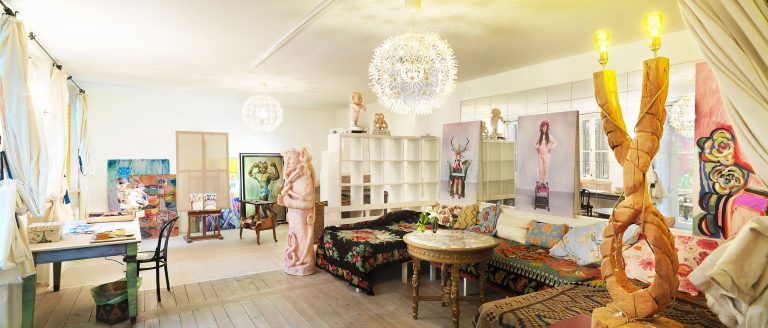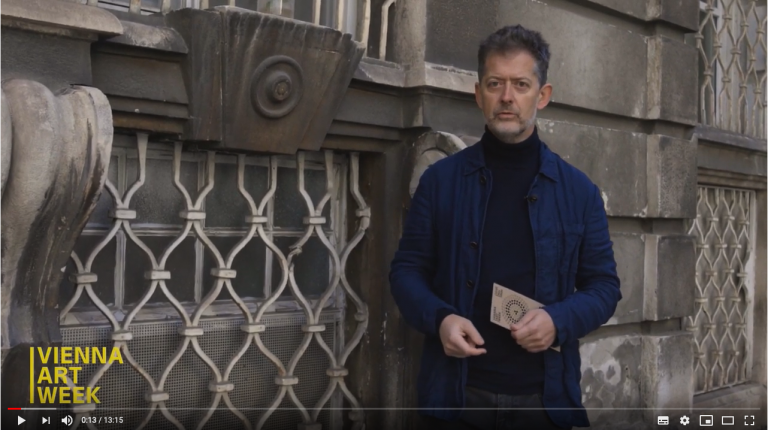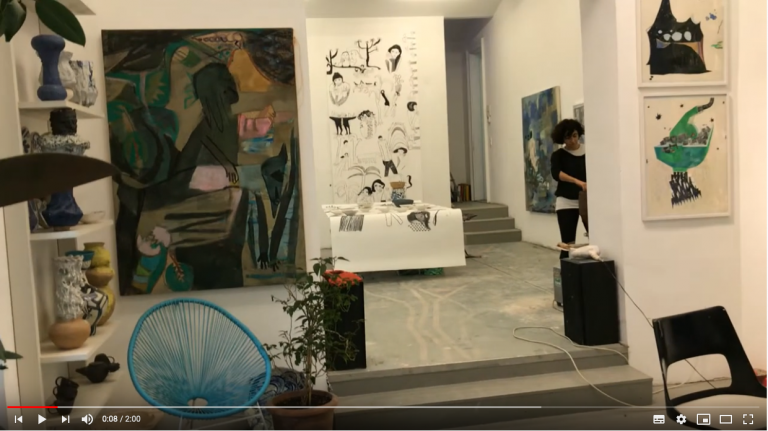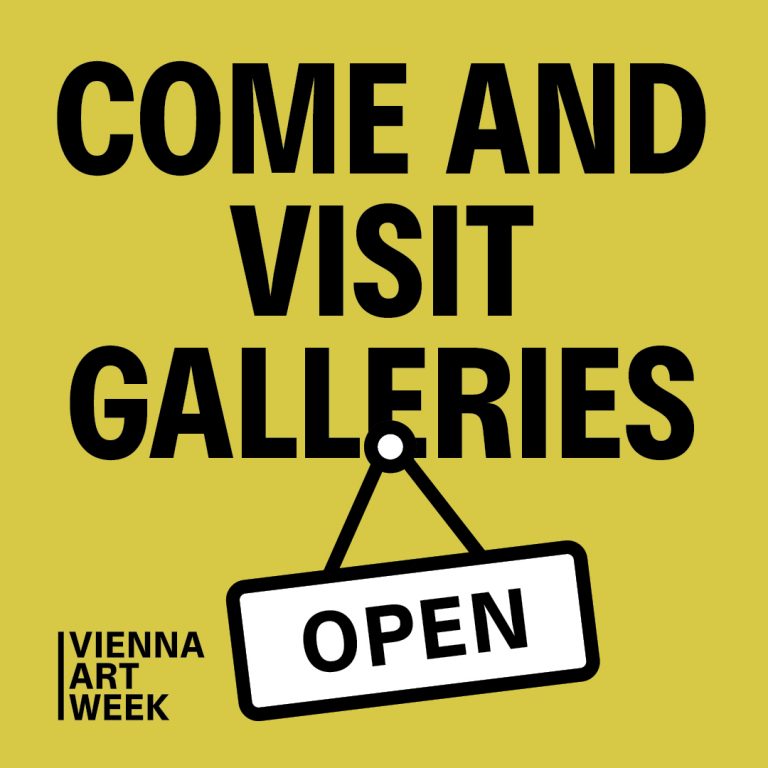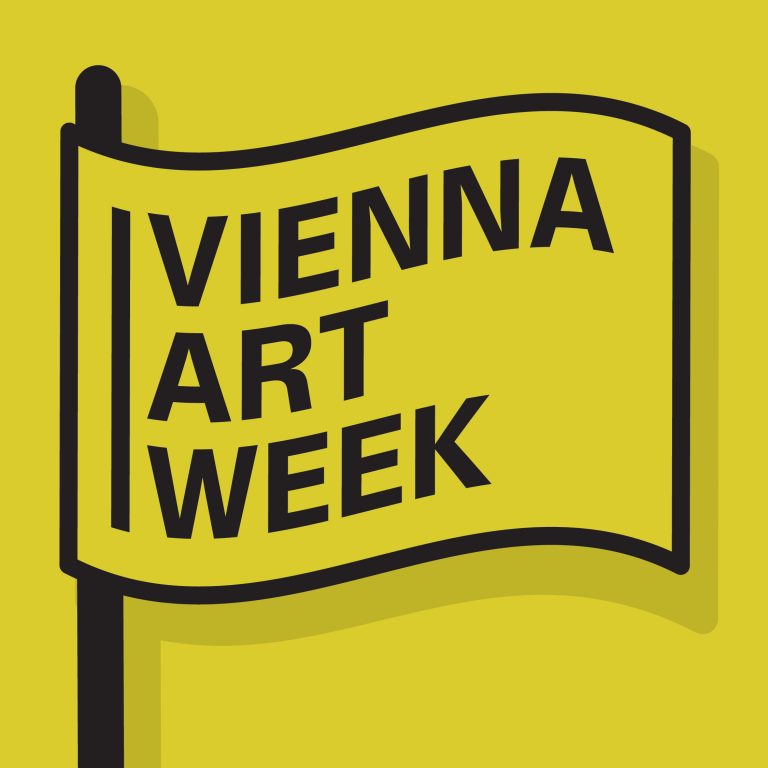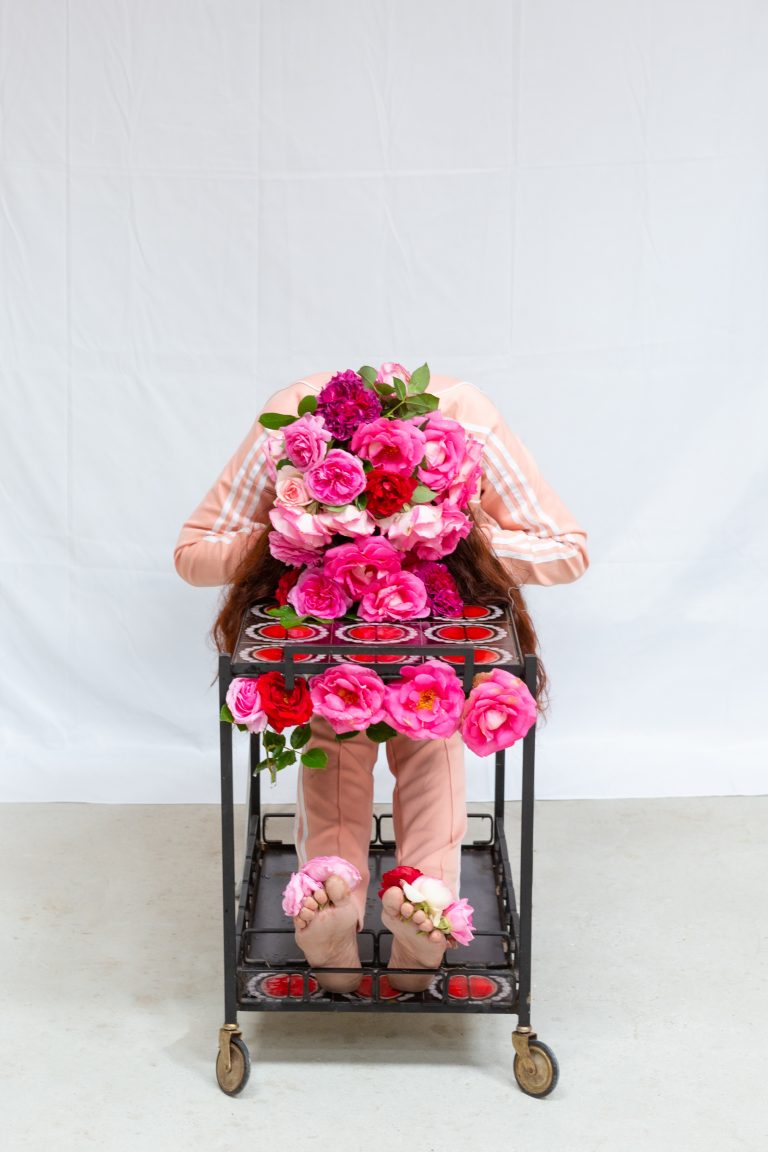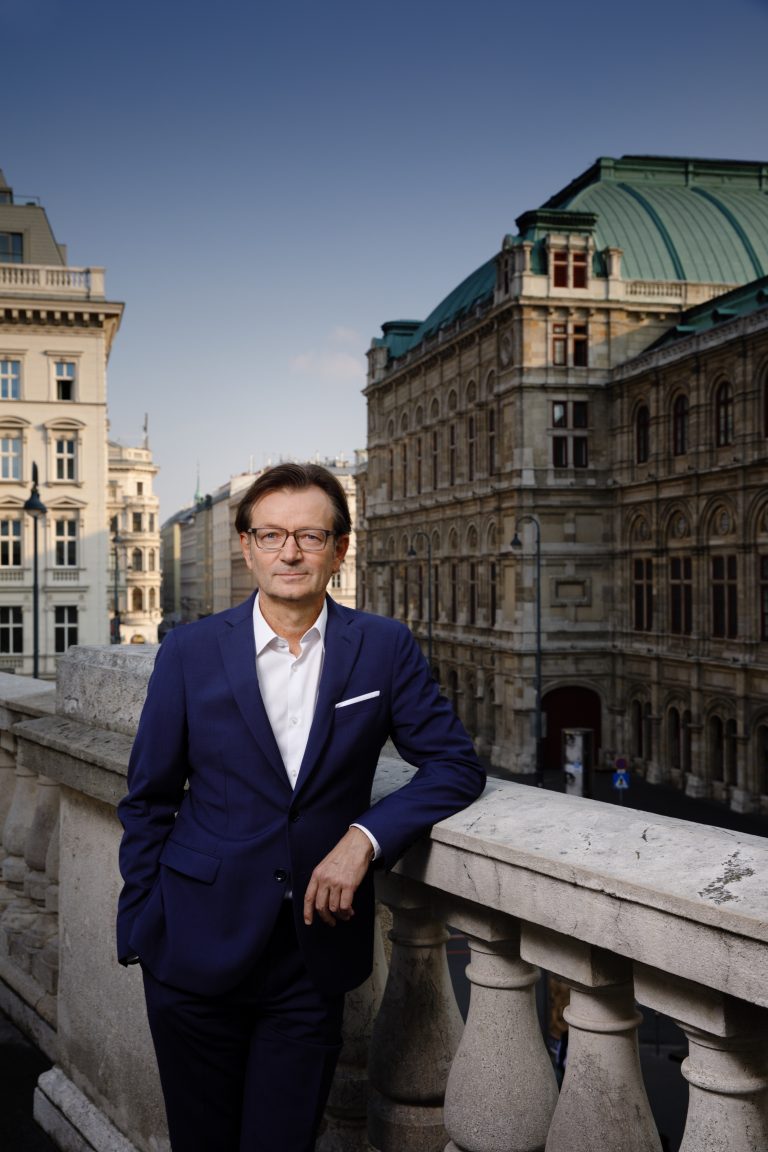LIVING RITUALS
VIENNA ART WEEK 13–2o NOV 2020
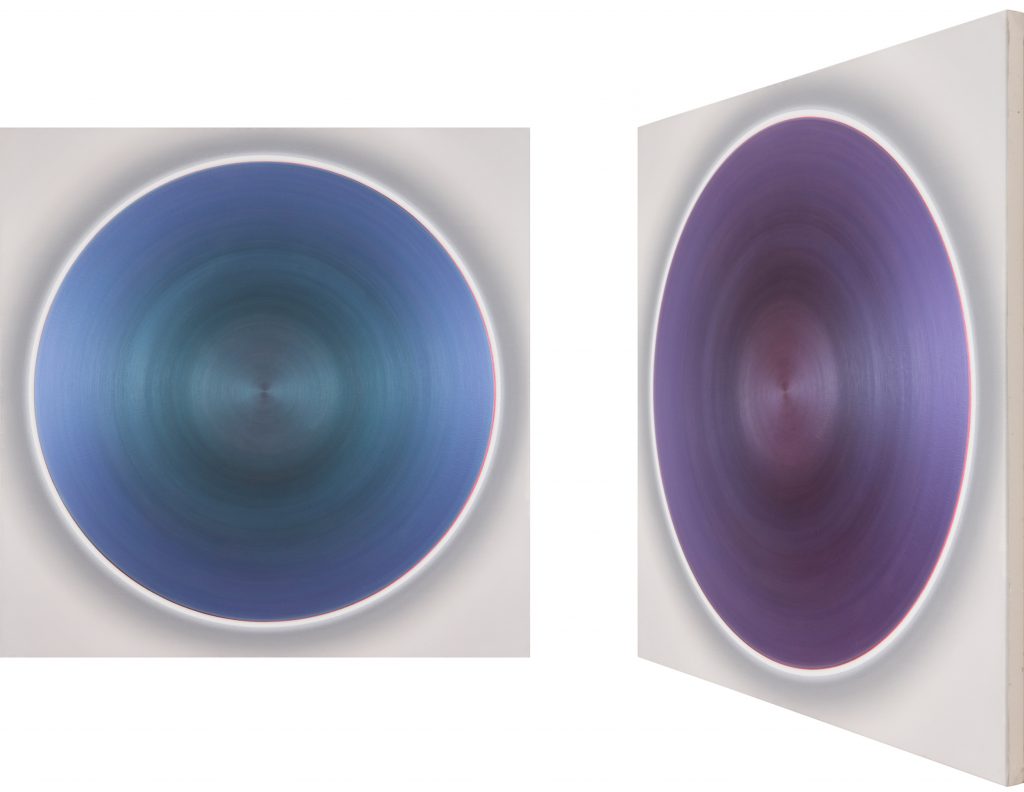
bright blue and turquoise dance with purple rose, 2019
Rituals might seem anachronistic nowadays – like messengers from other times and places, as though they were born of religious rites past, of the spiritual practices of foreign, perhaps indigenous peoples. And yet they are also deeply rooted in secularized societies, a conducive factor for social cohesion that marks time and lends structure to everyday life. There is always something of a primal, existential dimension inherent to rituals, as well as concentration and boundary dissolution. To understand rituals is to grasp the cultic embedding of the body in processual procedures and staging. “The ritualized body,” as Byung-Chul Han puts it, “is an ostentatious stage into which secrets and deities inscribe themselves.” Fathoming the intensity of the ritual form would also undoubtedly mean freeing ourselves from the notion that all pleasure is the result of wish fulfillment. One need only consider the game to understand the passion for rules, the power that comes from ceremony as opposed to a wish. In his current publication, the South Korean-born German philosopher notes with concern that contemporary rituals are in danger of disappearing: the economy of narcissism-driven attention value, the neoliberal pressure to perform, productive acceleration, capitalist self-improvement, global digitalization and cult of superficial networking are gradually displacing modes of ritual and rhythms of intuition. Its devastating consequences can be seen in the fast-moving pace of life, eroding solidarity and psychological fragmentation.

Ingrid Lechner, Frösche
And yet a certain rehabilitation of ritual does present itself in contemporary art, in an emphasis on the form as an ethics of ornamental aesthetics. We find it in the work of such masters of ceremony as Hermann Nitsch, for example, in that of “social sculpture” pioneer Joseph Beuys or stillness-wizard James Lee Byar – all champions of the ritual. Joining them are a number of female artists including Marina Abramović, Ana Mendieta and Joan Jonas, whose work explored body rituals from the 1970s onwards. Shamanic preachers and nature-lovers including Emma Kunz and Friedrich Schröder-Sonnenstern breathed life into dead matter with animistic acts, offering exhilarating visionary insights into all-encompassing world contexts. Filmmakers have long translated the myths of everyday life into “never ending stories” – the infinite, endless film loop. Rituals have assumed a new role in these virus-stricken times. Our typical greeting, the welcoming handshake, has given way to the washing of hands. Such well-tread paths as the daily walk to work have been supplanted by a login to join an online Zoom meeting. Strict shutdowns have found apartment-dwellers opening their windows every day at 6 pm to sing, clap and play music in a ritualized show of solidarity.
(Robert Punkenhofer, Angela Stief)
